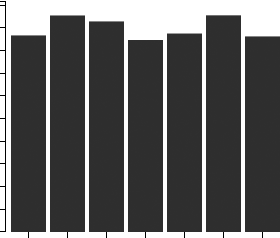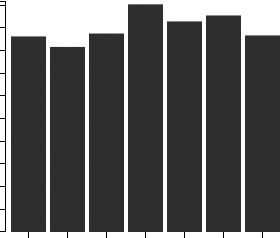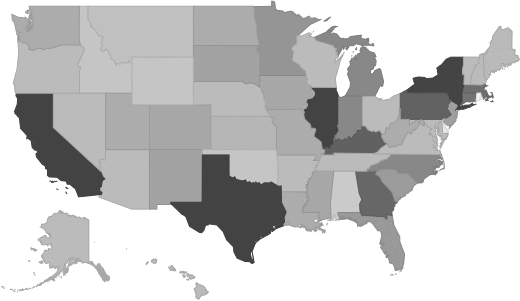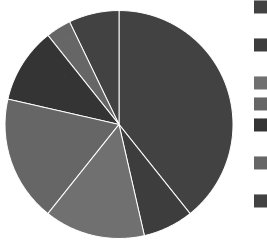HMO Medical Centers Industry - Market Research Report
Industry Overview
This U.S. industry comprises establishments with physicians and other medical staff primarily engaged in providing a range of outpatient medical services to the health maintenance organization (HMO) subscribers with a focus generally on primary health care. These establishments are owned by the HMO. Included in this industry are HMO establishments that both provide health care services and underwrite health and medical insurance policies.
Source: U.S. Census BureauMarket Size and Industry Forecast
This research report analyzes the market size and trends in the HMO Medical Centers industry. It shows overall market size from 2020 to the present, and predicts industry growth through 2030. Revenues data include both public and private companies.
| Historical | Forecasted |
|---|
| 2020 | 2021 | 2022 | 2023 | 2024 | 2025 | 2026 | 2027 | 2028 | 2029 | 2030 |
|---|
| Market Size (Total Revenue) | Included in Report |
| % Growth Rate |
| Number of Companies |
| Total Employees |
| Average Revenue per Company |
| Average Employees per Company |
Source: U.S. government financial dataIndustry Revenue ($ Billions)

Industry Forecast ($ Billions)

Advanced econometric models forecast five years of industry growth based on short- and long-term trend analysis. Market size includes revenue generated from all products and services sold within the industry.
Geographic Breakdown by U.S. State
Market size by state reveals local opportunity through the number of companies located in the region. Each state's growth rate is affected by regional economic conditions. Data by state can be used to pinpoint profitable and nonprofitable locations for HMO Medical Centers companies in the United States.
HMO Medical Centers Revenue by State

Distribution by Company Size
| Company Size | All Industries | HMO Medical Centers |
|---|
| Small Business (< 5 Employees) | Included |
| Small Business (5 - 20) |
| Midsized Business (20 - 100) |
| Large Business (100 - 500) |
| Enterprise (> 500) |
HMO Medical Centers Industry Income Statement (Average Financial Metrics)
Financial statement analysis determines averages for the following industry forces:
- Cost of goods sold
- Compensation of officers
- Salaries and wages
- Employee benefit programs
- Rent paid
- Advertising and marketing budgets
The report includes a traditional income statement from an "average" company (both public and private companies are included).
| Industry Average | Percent of Sales |
|---|
| Total Revenue | Included |
| Operating Revenue |
| Cost of Goods Sold (COGS) |
| Gross Profit |
| Operating Expenses |
| Operating Income |
| Non-Operating Income |
| Earnings Before Interest and Taxes (EBIT) |
| Interest Expense |
| Earnings Before Taxes |
| Income Tax |
| Net Profit |
Average Income Statement

Cost of Goods Sold
Salaries, Wages, and Benefits
Rent
Advertising
Depreciation and Amortization
Officer Compensation
Net Income
Financial Ratio Analysis
Financial ratios allow a company's performance to be compared against that of its peers.
| Financial Ratio | Industry Average |
|---|
| Profitability Ratios | Included |
| Profit Margin |
| ROE |
| ROA |
| Liquidity Ratios |
| Current Ratio |
| Quick Ratio |
| Activity Ratios |
| Average Collection Period |
| Asset Turnover Ratio |
| Receivables Turnover Ratio |
| Inventory Conversion Ratio |
Products and Services Mix
Product lines and services in the HMO Medical Centers industry accounting for the largest revenue sources.
| Product Description | Description | Revenue
($ Millions) |
|---|
| Industry total | Included |
| Patient care |
| All other revenue |
| Resale of merchandise |
| Resale - pharmaceuticals |
| Contributions, gifts, & grants - private |
| Investment income, including interest & dividends |
| All other operating receipts |
Salary information for employees working in the HMO Medical Centers industry.
| Title | Percent of Workforce | Bottom Quartile | Average (Median) Salary | Upper Quartile |
|---|
| Management Occupations | 5% | Included |
| Chief Executives | 0% |
| General and Operations Managers | 1% |
| Community and Social Service Occupations | 17% |
| Counselors, Social Workers, and Other Community and Social Service Specialists | 17% |
| Counselors | 8% |
| Substance Abuse, Behavioral Disorder, and Mental Health Counselors | 6% |
| Social Workers | 5% |
| Healthcare Practitioners and Technical Occupations | 40% |
| Health Diagnosing and Treating Practitioners | 25% |
| Registered Nurses | 15% |
| Registered Nurses | 15% |
| Health Technologists and Technicians | 15% |
| Healthcare Support Occupations | 11% |
| Other Healthcare Support Occupations | 8% |
| Miscellaneous Healthcare Support Occupations | 8% |
| Medical Assistants | 7% |
| Office and Administrative Support Occupations | 18% |
| Information and Record Clerks | 6% |
| Secretaries and Administrative Assistants | 6% |
| Secretaries and Administrative Assistants | 6% |
Government Contracts
The federal government spent an annual total of
$328,523 on the hmo medical centers industry. It has awarded 22 contracts to 6 companies, with an average value of $54,754 per company.
Top Companies in HMO Medical Centers and Adjacent Industries
| Company | Address | Revenue
($ Millions) |
|---|
Included |



